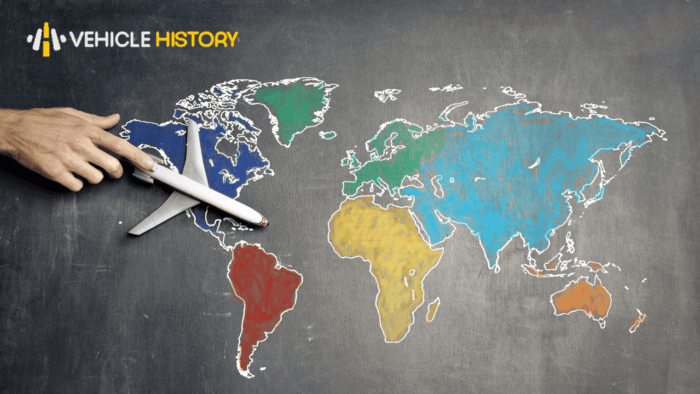We’ve all been there – you turn the key in your car’s ignition, and instead of the reassuring roar of the engine, you’re met with silence. A dead battery can be an inconvenient and frustrating situation, but fear not, as jump-starting a car is a skill every driver should have in their repertoire. In this comprehensive guide, we will walk you through the step-by-step process of jump-starting a car safely and efficiently. But why do people need to jump-start their vehicles?
People jump-start their vehicles sometimes primarily due to issues related to the car’s battery. The most common reason is a dead battery, which can occur from accidentally leaving lights on, an old battery, or parasitic drains caused by malfunctioning electrical components. Extreme weather, such as cold temperatures reducing the battery’s capacity or heat causing fluid evaporation, can also lead to dead batteries. Vehicles that aren’t driven regularly, electrical problems like a malfunctioning alternator, human error like leaving electronic devices on, aging batteries, corroded battery terminals, faulty battery connections, and emergency situations can all necessitate a jump-start. While jump-starting provides a temporary power boost, addressing the underlying issue through regular battery maintenance and checks is crucial for long-term vehicle reliability.
Before We Begin: Safety First
Before you attempt to jump-start a car, it’s crucial to prioritize safety. Here are a few essential safety precautions to keep in mind:
Safety Gear: Always wear safety gear like gloves and safety glasses to protect yourself from any potential sparks or battery acid.
Location: Ensure you’re in a safe, well-lit area away from traffic. Park both cars (the one with the dead battery and the one providing the jump) in a way that they won’t touch.
Turn Off Engines: Turn off the engine, lights, radio, and any other electrical accessories in both cars.
Read the Manuals: Familiarize yourself with both car manuals, especially the sections on jump-starting and battery placement, as the process may vary depending on the vehicle’s make and model.
Now that we’ve established the importance of safety, let’s get into the step-by-step process of jump-starting a car.
Step 1: Gather Your Tools
To jump-start a car, you’ll need a few essential tools:
- Jumper cables: Ensure they are in good condition with no visible damage to the cables or clamps.
- A running vehicle with a charged battery.
- Safety gear: Gloves and safety glasses.
Step 2: Position the Vehicles
Position the working vehicle and the one with the dead battery so they are nose-to-nose or side-by-side, but never touching. Both vehicles should be in ‘park’ (for automatic transmissions) or ‘neutral’ (for manual transmissions) and with their engines off.
Step 3: Connect the Jumper Cables
Now, it’s time to connect the jumper cables:
Open the hoods of both cars and identify the positive and negative terminals on both batteries. They are usually marked with “+” and “-” signs.
Connect the jumper cables in this order:
- a. Red cable: Connect one end to the positive (+) terminal of the dead battery.
- b. Red cable: Connect the other end to the positive (+) terminal of the working battery.
- c. Black cable: Connect one end to the negative (-) terminal of the working battery.
- d. Black cable: Connect the other end to a metal, unpainted part of the dead car’s engine block. This serves as a ground and helps prevent sparks near the battery.
Step 4: Start the Working Vehicle
Start the working vehicle’s engine and let it run for a few minutes. This allows the dead battery to charge.
Step 5: Attempt to Start the Dead Vehicle
Now, try to start the car with a dead battery. If it starts, great! If not, wait a few more minutes before attempting again. If it still doesn’t start after a few tries, it may be time to call for professional assistance.
Step 6: Remove the Jumper Cables
Once the dead vehicle has started successfully, it’s time to remove the jumper cables, but do it in the reverse order:
- Black cable: Remove the black cable from the engine block of the formerly dead vehicle.
- Black cable: Remove the other end from the working vehicle’s negative (-) terminal.
- Red cable: Remove the red cable from the working vehicle’s positive (+) terminal.
- Red cable: Remove the other end from the formerly dead vehicle’s positive (+) terminal.
Step 7: Keep the Engine Running
After jump-starting, leave the formerly dead vehicle’s engine running for at least 20 minutes. This allows the alternator to recharge the battery.
Jump-starting a car is a valuable skill that saves you time and money in emergencies. Remember to prioritize safety at all times, and if you’re ever unsure about the process, don’t hesitate to seek professional assistance. With the knowledge of how to jump-start a car safely, you can confidently navigate the unexpected bumps on your journey as a driver.
How to Jumpstart a Car with Leads
Jump-starting a car with leads, also known as jumper cables, is a straightforward process that can come to your rescue when faced with a dead battery. To begin, make sure both vehicles are parked safely, with their engines turned off. Grab a set of jumper cables, identifying the red and black clamps. Connect the red clamp to the positive (+) terminal of the dead battery and the other red clamp to the positive terminal of the working battery. Then, attach the black clamp to the negative (-) terminal of the working battery and the other black clamp to an unpainted, metal part of the dead vehicle’s engine block. Start the working vehicle, let it run for a few minutes, and then attempt to start the dead car. Once the dead vehicle is running, remove the clamps in the reverse order they were attached. This method is a reliable way to jump-start a car and get back on the road.


